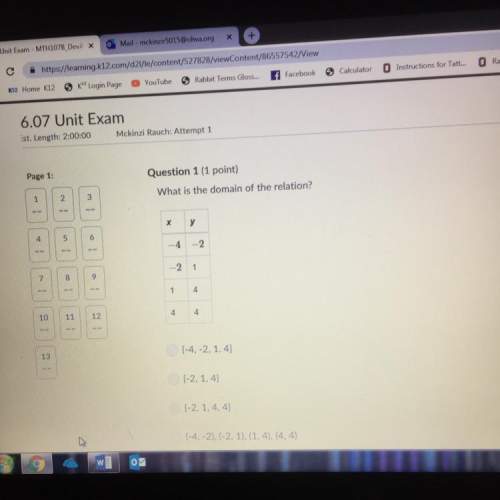
Mathematics, 01.07.2019 16:10 cbonner191
Use the sample data and confidence level given below to complete parts (a) through (d). in a study of cell phone use and brain hemispheric dominance, an internet survey was e-mailed to 2346 subjects randomly selected from an online group involved with ears. 1189 surveys were returned. construct a 95% confidence interval for the proportion of returned surveys. click the icon to view a table of z scores. a) find the best point estimate of the population proportion p. 0.507 (round to three decimal places as needed.) b) identify the value of the margin of error e. eequals 0.020 (round to three decimal places as needed.) c) construct the confidence interval. 0.487less than p less than 0.527 (round to three decimal places as needed.) d) write a statement that correctly interprets the confidence interval. choose the correct answer below. a. one has 95% confidence that the interval from the lower bound to the upper bound actually does contain the true value of the population proportion. b. 95% of sample proportions will fall between the lower bound and the upper bound. c. there is a 95% chance that the true value of the population proportion will fall between the lower bound and the upper bound. d. one has 95% confidence that the sample proportion is equal to the population proportion.

Answers: 3


Another question on Mathematics

Mathematics, 21.06.2019 17:00
If f(x) = 2x - 6 and g(x) = 3x + 9, find (f - g)(x). a. (f-g)(x) = x + 15 o o b. (f- g)(x) = -x - 15 o c. (f- g)(x) = 5x + 3 o d. (f- g)(x) = -x+3 submit
Answers: 2

Mathematics, 21.06.2019 20:00
Me! i really need to get this right before 9. prove the divisibility of 7^6+7^5-7^4 by 11. use factoring so you get a number times 11. just tell me the number. i need this done asap
Answers: 1

Mathematics, 21.06.2019 20:30
Does the function satisfy the hypotheses of the mean value theorem on the given interval? f(x) = 4x^2 + 3x + 4, [−1, 1] no, f is continuous on [−1, 1] but not differentiable on (−1, 1). no, f is not continuous on [−1, 1]. yes, f is continuous on [−1, 1] and differentiable on (−1, 1) since polynomials are continuous and differentiable on . there is not enough information to verify if this function satisfies the mean value theorem. yes, it does not matter if f is continuous or differentiable; every function satisfies the mean value theorem.
Answers: 1

Mathematics, 21.06.2019 23:10
What is the radius of the cone in the diagram? round your answer to the nearest whole number
Answers: 2
You know the right answer?
Use the sample data and confidence level given below to complete parts (a) through (d). in a study o...
Questions


Mathematics, 08.11.2021 14:00









Mathematics, 08.11.2021 14:00




Mathematics, 08.11.2021 14:00




English, 08.11.2021 14:00





